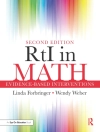This pioneering study of migrant journeys to Britain begins with Huguenot refugees in the 1680s and continues to asylum seekers and east European workers today. Analyzing the history and memory of migrant journeys, covering not only the response of politicians and the public but also literary and artistic representations, then and now, Kushner’s volume sheds new light on the nature and construction of Britishness from the early modern era onwards. It is an essential tool for those wanting to understand why people come to Britain (or are denied entry) and how migrants have been viewed by state and society alike.
The journeys covered vary from the famous (including the Empire Windrush in 1948) to the obscure, such as the Volga German transmigrants passing through Britain in the 1870s. While employing a broadly historical approach, Kushner incorporates insights from many other disciplines and employs a comparative methodology to highlight the importance of the symbolic as well as the physical nature of such journeys.
表中的内容
Section 1: Introduction and contexts
Introduction
1. Britishness, entry and exclusion
2. Constructing migrant journeys
Section 2: Early journeys, 1685 to 1880
3. Huguenot journeys: Constructing the refugees
4. Volga Germans in the late nineteenth century: from refugees to foreign paupers
Section 3: The Nazi era
5. Constructing (another) ideal refugee journey: the Kinder
6. The St Louis and after: Refugee journeys without end?
Section 4: Colonial and postcolonial journeys
7. The Empire Windrush: The making of an iconic British journey
8. Stowaways and others: racism and alternative journeys into Britishness
Section 5: Conclusions
9. Britishness and the nature of migrant journeys
Bibliography
Index
关于作者
Tony Kushner is Professor in History and director of the Parkes Institute for the Study of Jewish/non-Jewish Relations at the University of Southampton












